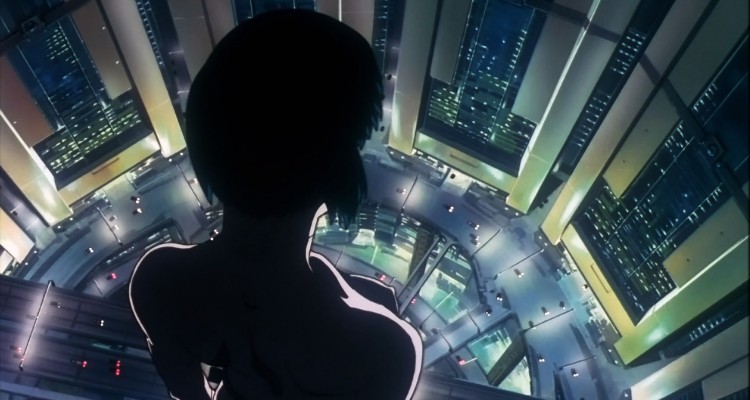The entire opening sequence is filled with a curious racial subtext.
responsible for the movie, their response — at least as far as can be seen from the first trailer — has been to double down on the coded imagery and damn the haters. But that’s far from the only problem facing Rupert Sanders’ adaptation of the beloved Japanese manga.
For a movie criticized so loudly for its racial politics, it’s actually somewhat surprising, and almost impressively bold, that the first image of the trailer is a robotic geisha. But the imagery of the entire opening sequence is filled with a curious racial subtext: it’s a white man confronted by the geisha robot (indeed, in the glimpse of men pulled from the table by the robots, it looks like it’s only white men being pulled away — saving them from the assault that seemingly slaughters those remaining at the table), and Scarlet Johannson’s Major dives to the rescue past a neon sign reading “High Quality” in Japanese. It’s as if the trailer opens with a sequence specifically created to lean in to the existing controversy.
In many ways, the opening sequence colors the rest of the trailer, turning things that might otherwise seem innocuous problematic by association. Johannson’s skintight, breast-hugging outfit might be faithful to the original source material, but it looks exploitative in real life in a way a drawn version doesn’t, for one thing. (Changing a character’s ethnicity is fine, but why would anyone change her outfit and risk enraging fans?) For another, the lesbian kiss at 1:01; sure, it shows Major having an emotional connection with someone, but it also feels very aimed at the male gaze at the same time.
It’s these elements — the instants that seem intended to provoke — that stick in the mind most from the trailer, which otherwise offers a mix of existential philosophy and gunplay that feels familiar for anyone who’s seen The Matrix (Ironic, of course; the original Ghost in the Shell manga predated the Wachowskis’ breakthrough by a decade, and indeed influenced its creation) and a cityscape that feels as influenced by Ridley Scott’s Blade Runner and Terry Gilliam’s Brazil as anything more contemporary.
As a result, Ghost in the Shell is left feeling very much of the now: prodding subjects and obsessions of the contemporary audience without advancing the conversation, and using the imagery of the era today’s viewers are obsessed with… which happens to be thirty years ago. Shouldn’t science fiction be more forward looking than that?


Leave a Reply